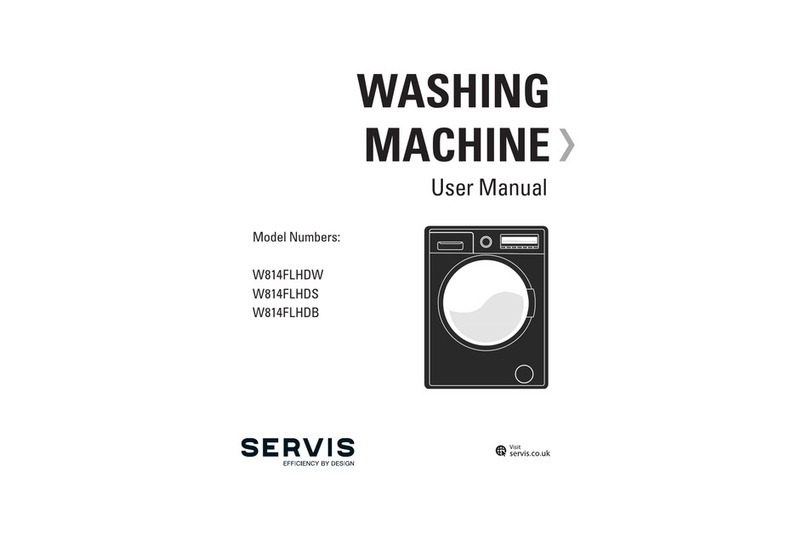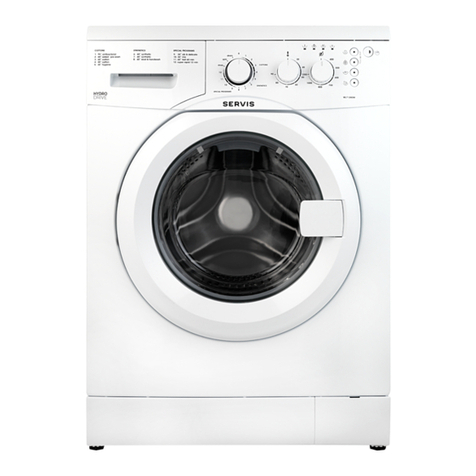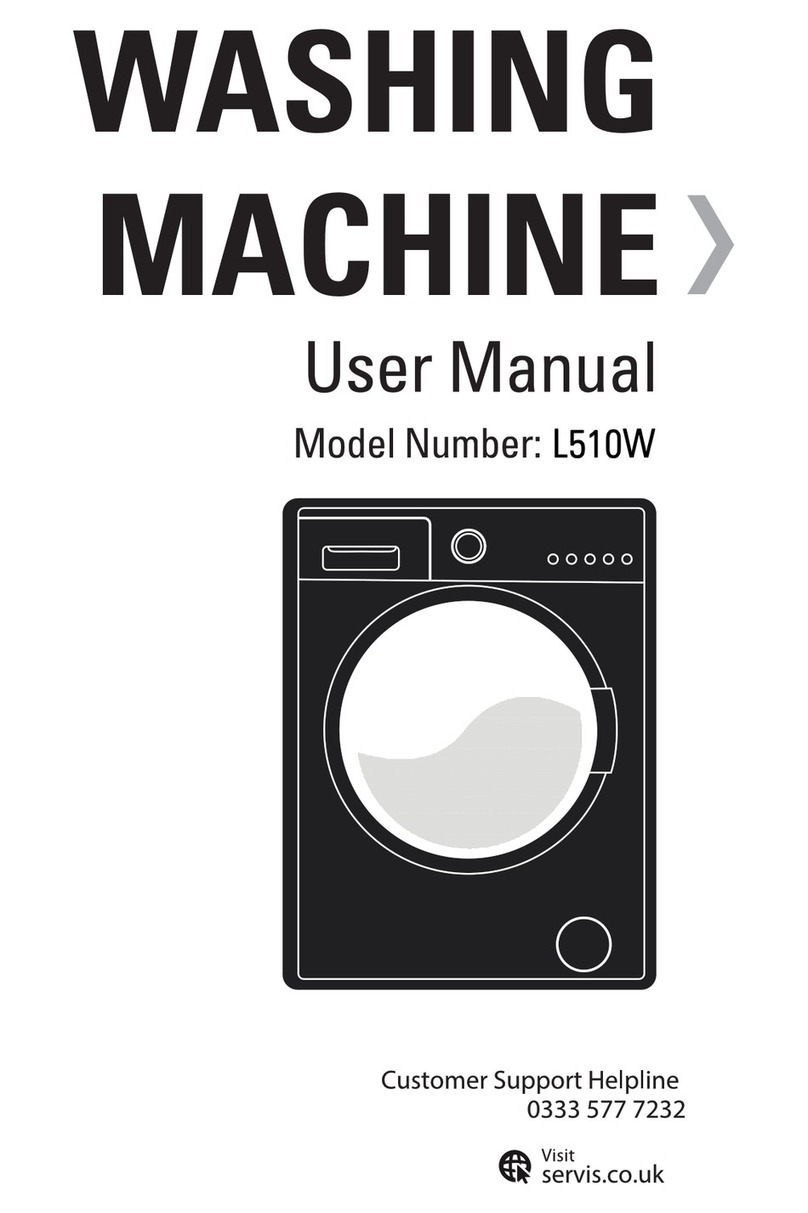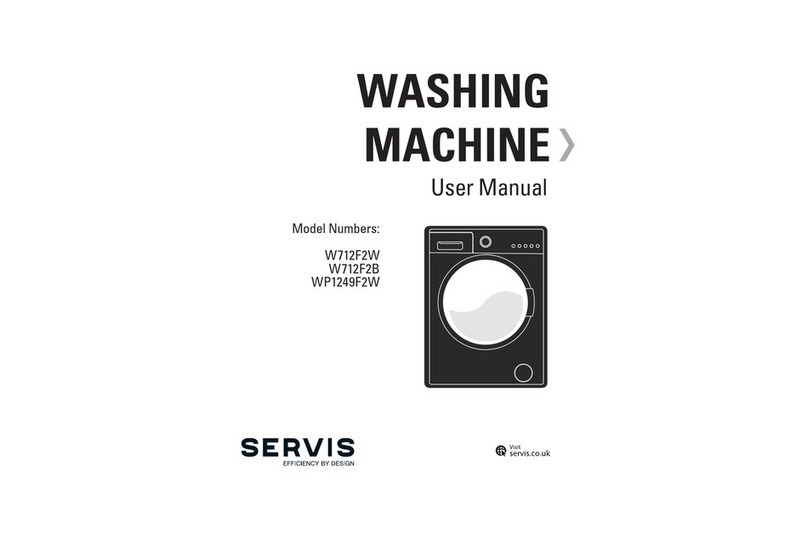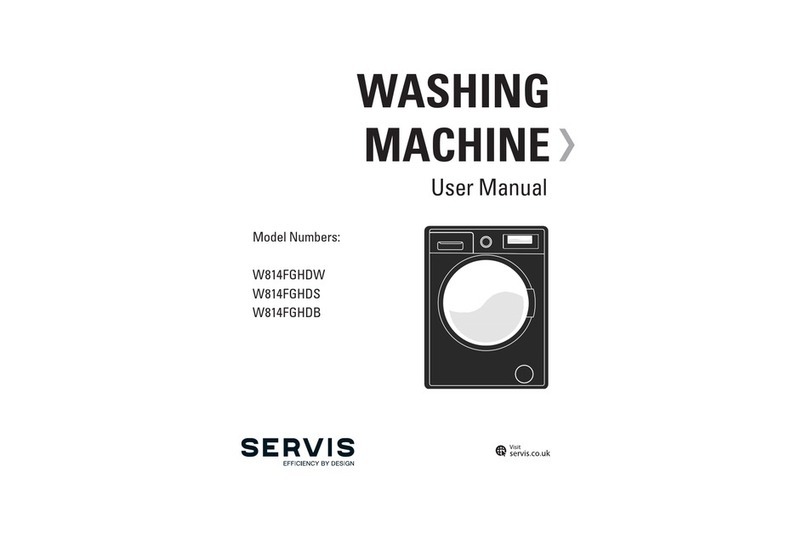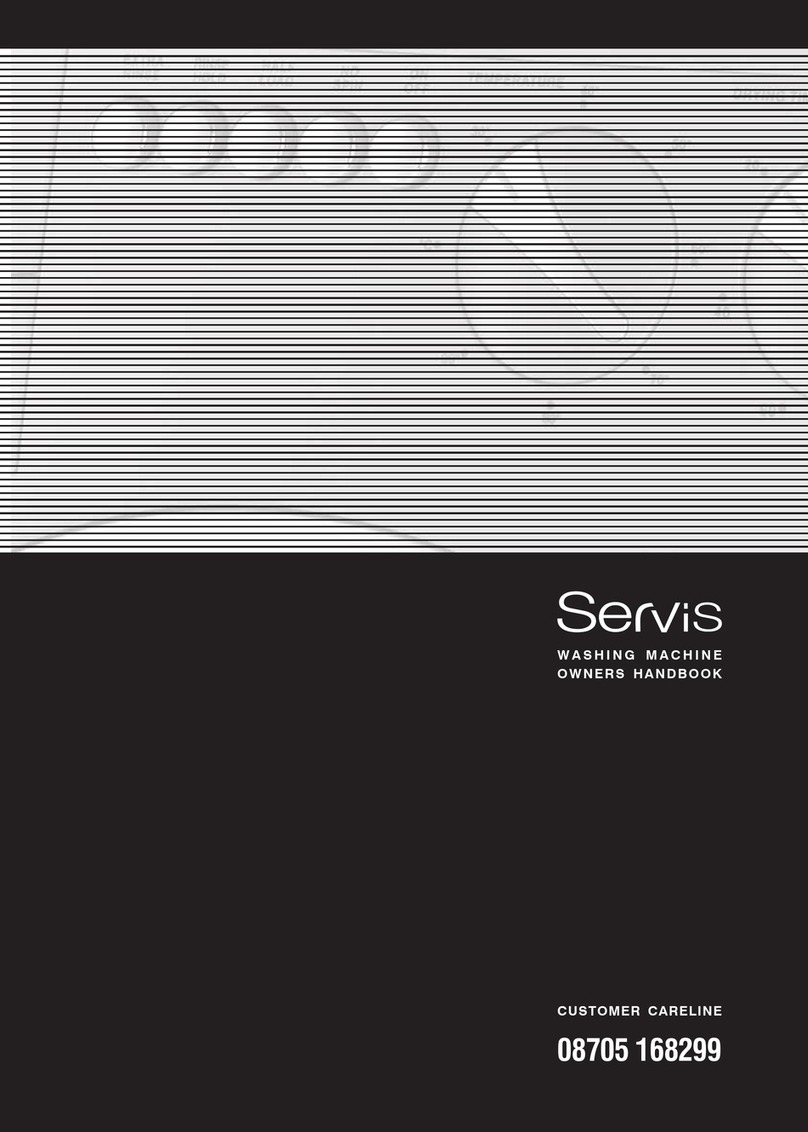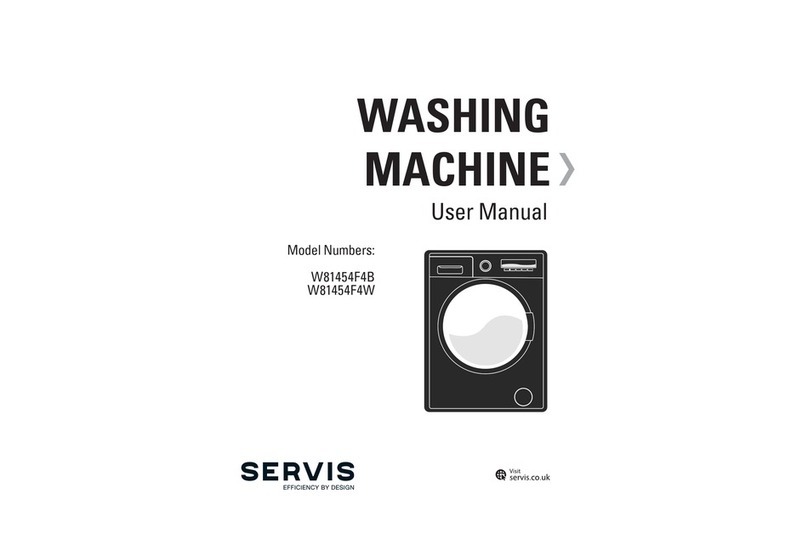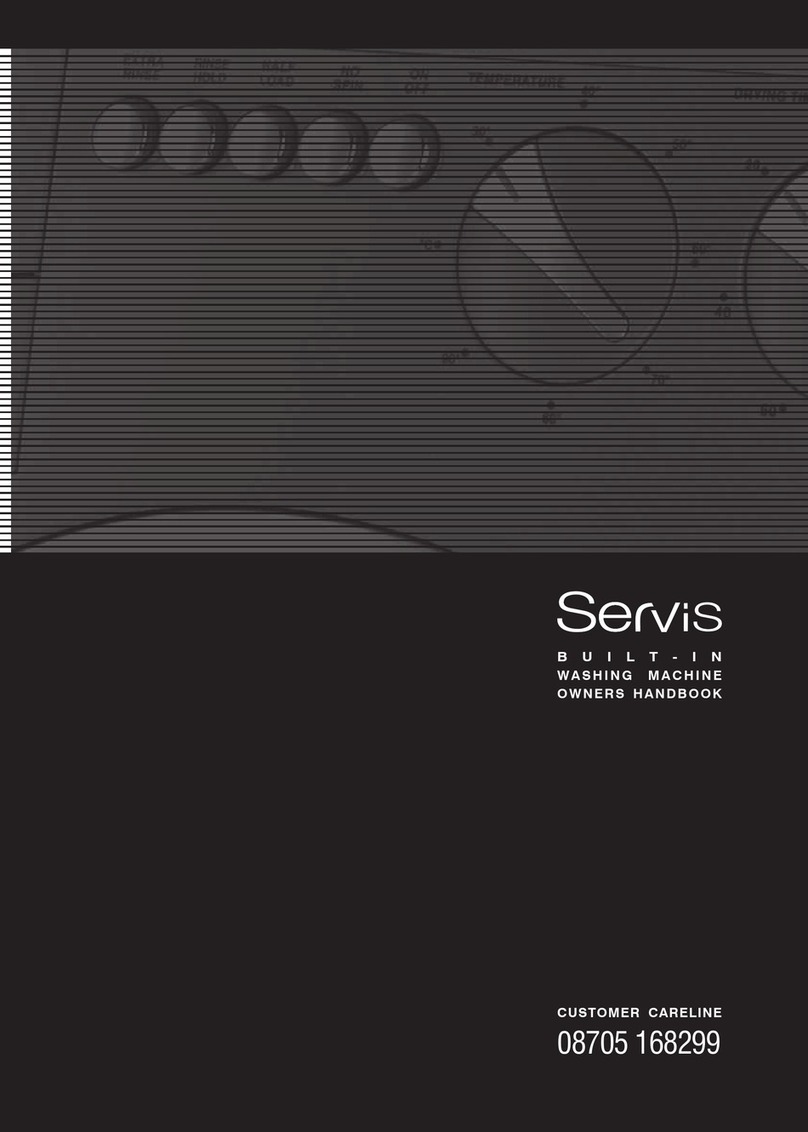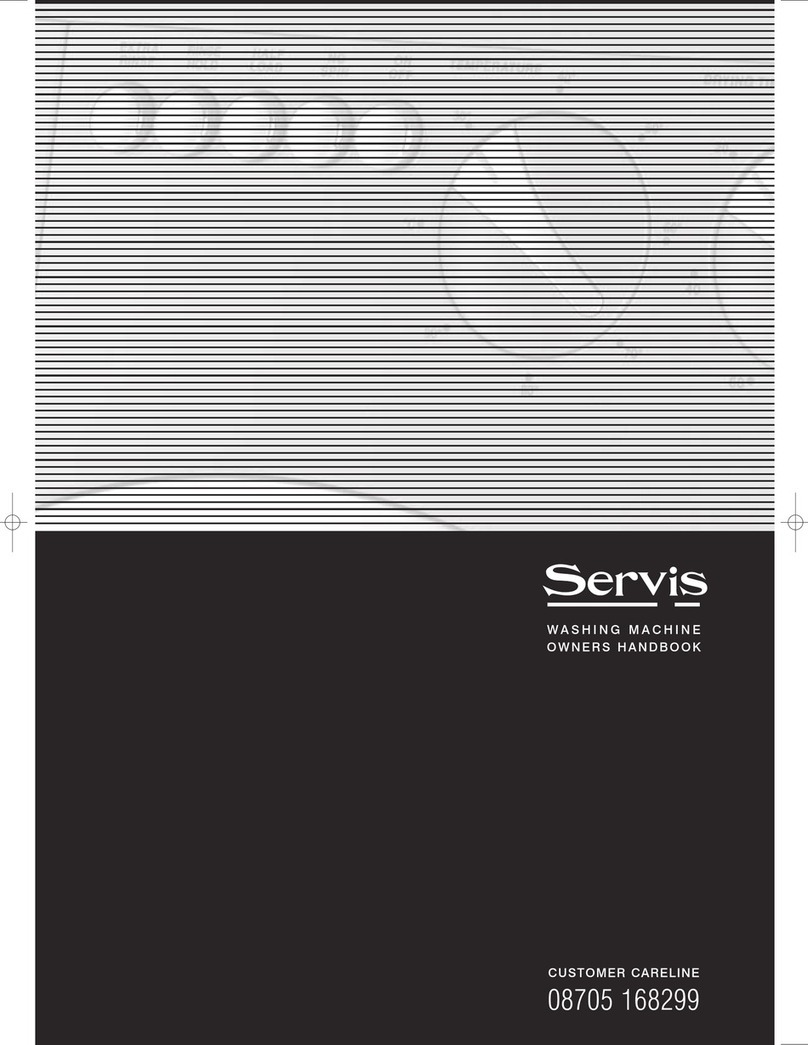01 02
T: 0800 0124 382 T: 0800 0124 382
WELCOME SAFETY INSTRUCTIONS
To ensure your safety and the safety of others, please read the following safety
precautions before you operate your Washing Machine.
Your Washing Machine conforms to current safety requirements. Inappropriate use can,
however lead to personal injury and damage to property. To avoid the risk of accidents and
damage to your washing machine, read this user guide carefully before using it for the first
time. It contains important information on the installation, safety, use and maintenance
of your Washing Machine. Retain this user guide for future use and pass it on to any new
owners.
Read this user guide before using or installing your Washing Machine.
Your washing machine is for domestic use only and is only intended to wash items which
are specified by the manufacturer to be machine washable on the label, and textiles
composed of hand washable wool or wool blend fabrics as well as satin, lace, silk and other
hand-washable garments. Do not use your Washing Machine for any purpose not expressly
specified in this user guide.
Keep children away from your Washing Machine when in use. To avoid risk of injury do not
allow children to play on or near it or to play with its controls.
Before setting up your washing machine, check for any external visible damage. Do not
install or use your Washing Machine if it is damaged.
Prolonged intensive use of your Washing Machine may call for additional ventilation.
Before connecting your Washing Machine, ensure that the information on the data plate
(voltage and connected load) matches that of the mains electricity supply. Consult a qualified
electrician if in doubt.
WELCOME
Thank you for choosing this Servis WL612W Washing Machine which has been designed and
manufactured to give you many years of trouble free service.
You may already be familiar with using a similar product but please take time to read these
instructions which have been written to ensure you get the very best from your purchase.
Servis provides you with a guarantee which will protect you should your Washing Machine
develop an electrical or mechanical fault during the guarantee period. To ensure that you get a
prompt and efficient service, please register your Washing Machine immediately.
You will find a warranty card included within the packaging. To register, complete the form, or:
Visit us at www.servis.co.uk
Call us on 0800 0124 382
WARRANTY
ITEMS INCLUDED
Fill hose
Blanking caps x 4
Fluid detergent level plate
WL612W Washing Machine
Figure 1
